How to make Baked Sockeye Salmon for the perfect result every time! This easy method for cooking salmon is your ticket to healthy weeknight meals.
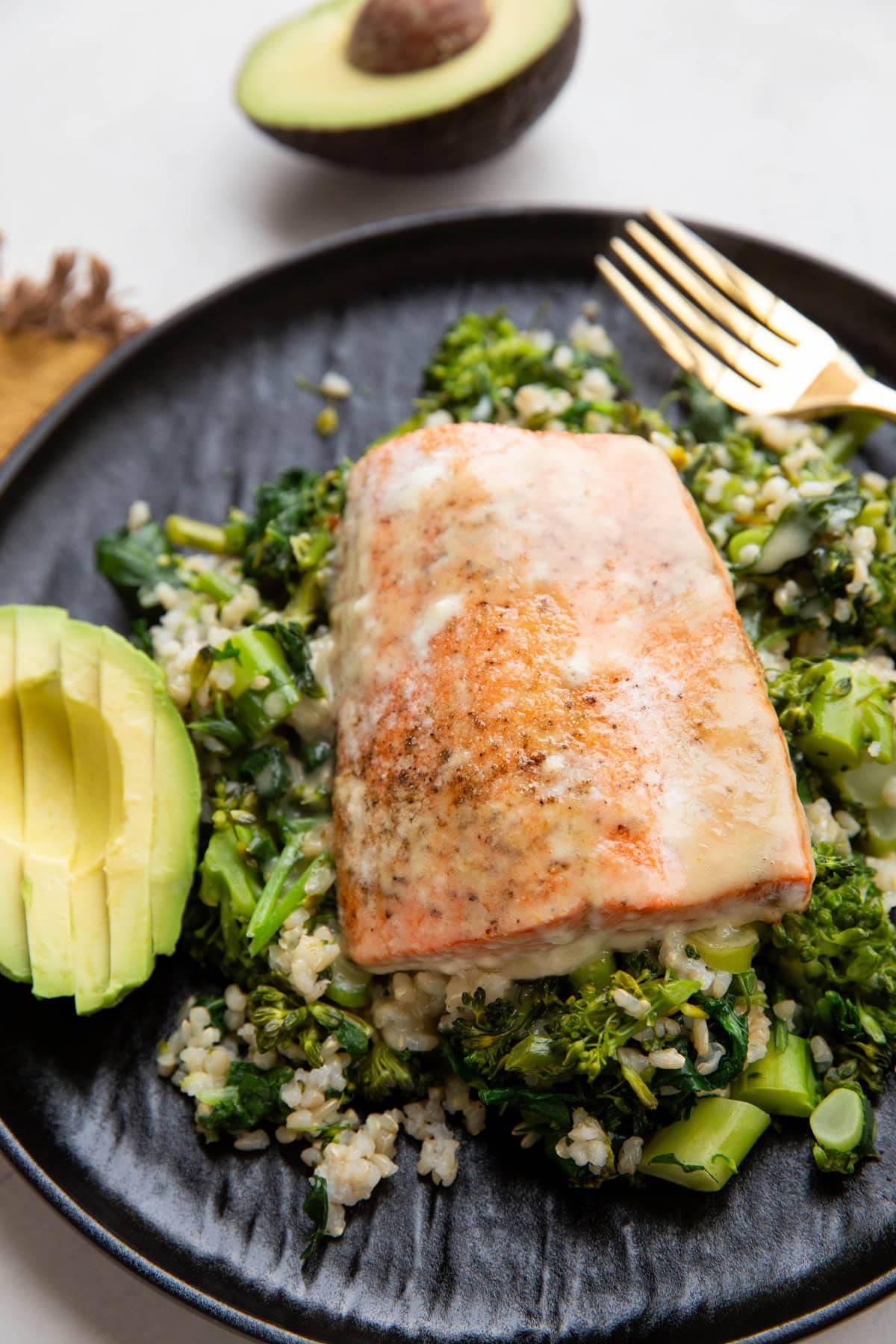
Welcome to quite possibly the quickest and easiest main dish you’ll ever make.
While my current favorite salmon recipe is my Crispy Bang Bang Salmon Bites Bowls, I often find tossing a sockeye filet in the oven is the best way to get a healthy meal down the hatch.
Salmon lovers, you may just end up putting this easy recipe on repeat for weeknight meals.
From start to finish, you’re looking at 20 minutes of time or less and you end up with a high-protein dinner.
Sockeye salmon is a lean fish that is low in fat and very high in protein relative to its weight.
An ideal option for those who 1) love salmon 2) pay attention to macros 3) are looking to maintain or gain muscle 4) enjoy clean eating and 5) strive for balanced blood sugar.
I build all of my meals around protein to promote stable blood sugar and also because I’m always up for building more muscle.
Sockeye salmon is low and fat and what little fat there is comes in the form of omega-3 fatty acids, which is considered to be healthy fat.
For this reason and its high protein content, sockeye salmon is one of my go-to protein sources that I eat regularly.
Sockeye does taste fishier than King salmon or Atlantic salmon, which leaves plenty of room for adding sauces and bigger bolder flavors.
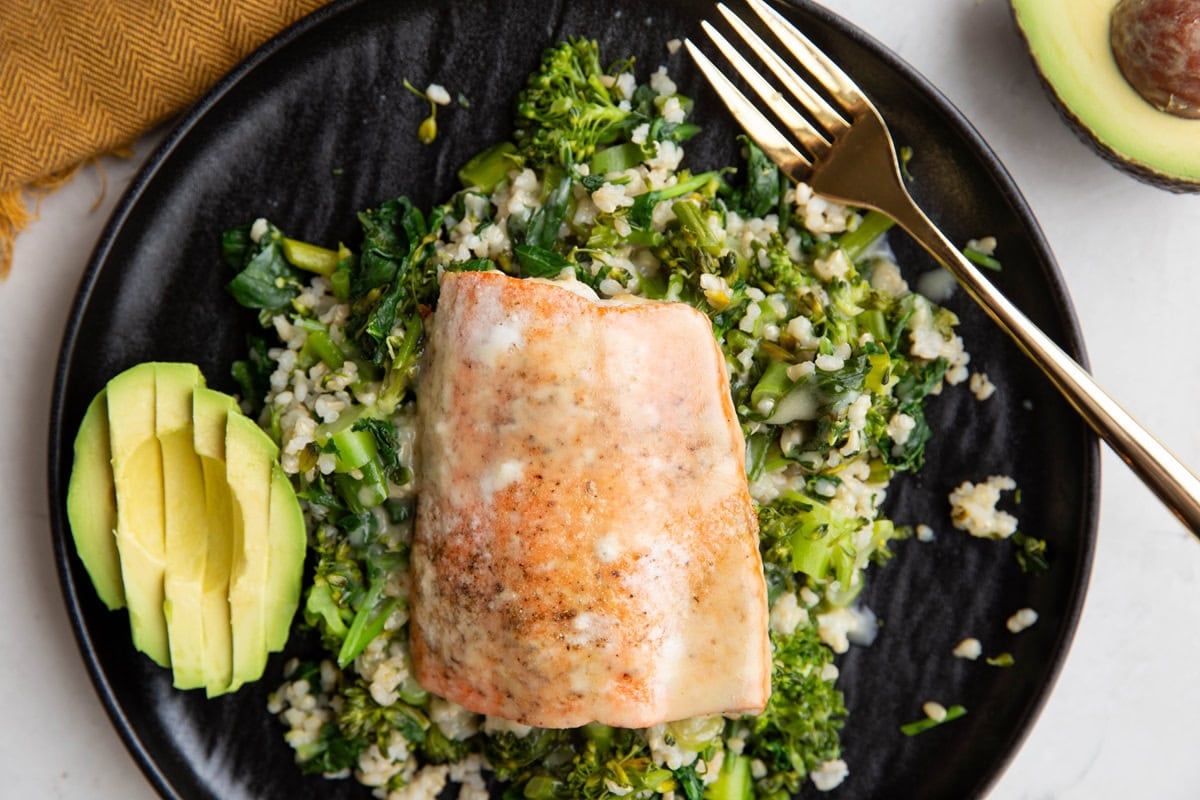
Let’s discuss the simple ingredients for sockeye salmon.
Ingredients for Baked Sockeye Salmon:
Sockeye Salmon: Pick up fresh or frozen sockeye salmon fillets. If I’m making sockeye salmon just for myself, I buy a 4 to 6-ounce filet.
When serving guests, I allot for at least 8 ounces per person.
I generally buy wild-caught frozen sockeye filets. If using frozen, be sure to thaw frozen filets completely before preparing the recipe.
Most grocery stores carry frozen sockeye salmon in the freezer section of the grocery store. Whenever I can find it, I go with Copper River Salmon, which is a wild Alaskan company. If you prefer less fatty fish, coho salmon is a great option too.
Avocado Oil: To prevent sockeye from drying out during the baking process, we need a little oil. Since we’re cooking at a high temperature, I recommend using avocado oil because it has a high smoke point. If you only cook with olive oil, olive oil works too.
Garlic Powder, Black Pepper, Sea Salt: The simple seasoning dry rub I use on all my salmon filets. The combination of garlic powder, salt, and pepper is all you need for a tasty result.
If you prefer different seasonings, such as chili powder, lemon pepper, or Cajun seasoning, feel free to use them. Dried dill or fresh dill are a great option too.
Recipe Adaptations:
There are plenty of ways you can get creative with sockeye! For the purpose of providing the most basic recipe, we’re keeping it simple here. If you’re looking for some extra flavor, drizzle some garlic butter over the fish or make a honey mustard glaze.
You can also make an Asian-inspired glaze using soy sauce, brown sugar, rice vinegar, fresh garlic, and and sesame oil.
Always serve salmon with fresh lemon slices!
Now that we’ve covered the basic ingredients for sockeye salmon, let’s make it.
How to Make Baked Sockeye Salmon:
Preheat the oven to 400 degrees F.
Remove the sockeye filets from their packaging and place them in a large baking dish or on a sheet pan. Use paper towels to dab off any excess moisture and keep salmon skin side down.
Drizzle the salmon with avocado oil and use your hands or a silicone brush to coat the flesh with oil.
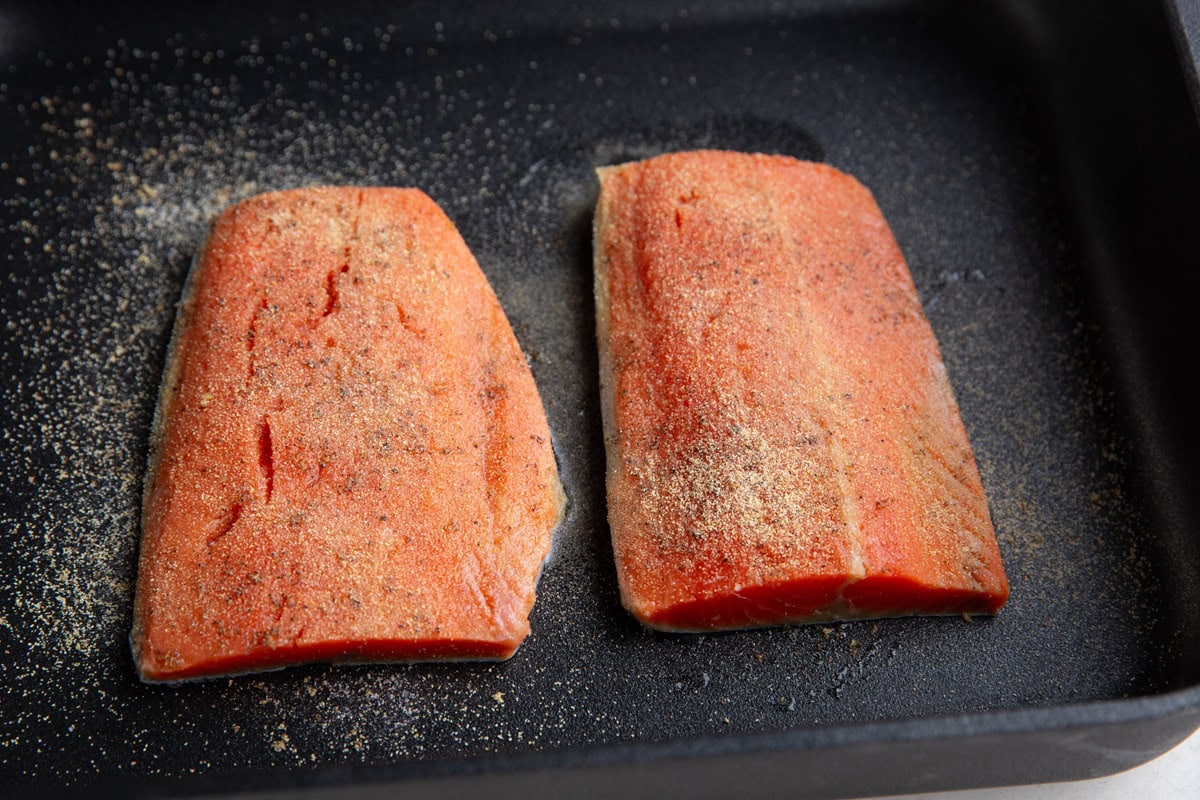
Sprinkle the salmon with sea salt, garlic powder, and black pepper. You can add any spice blends you like here.
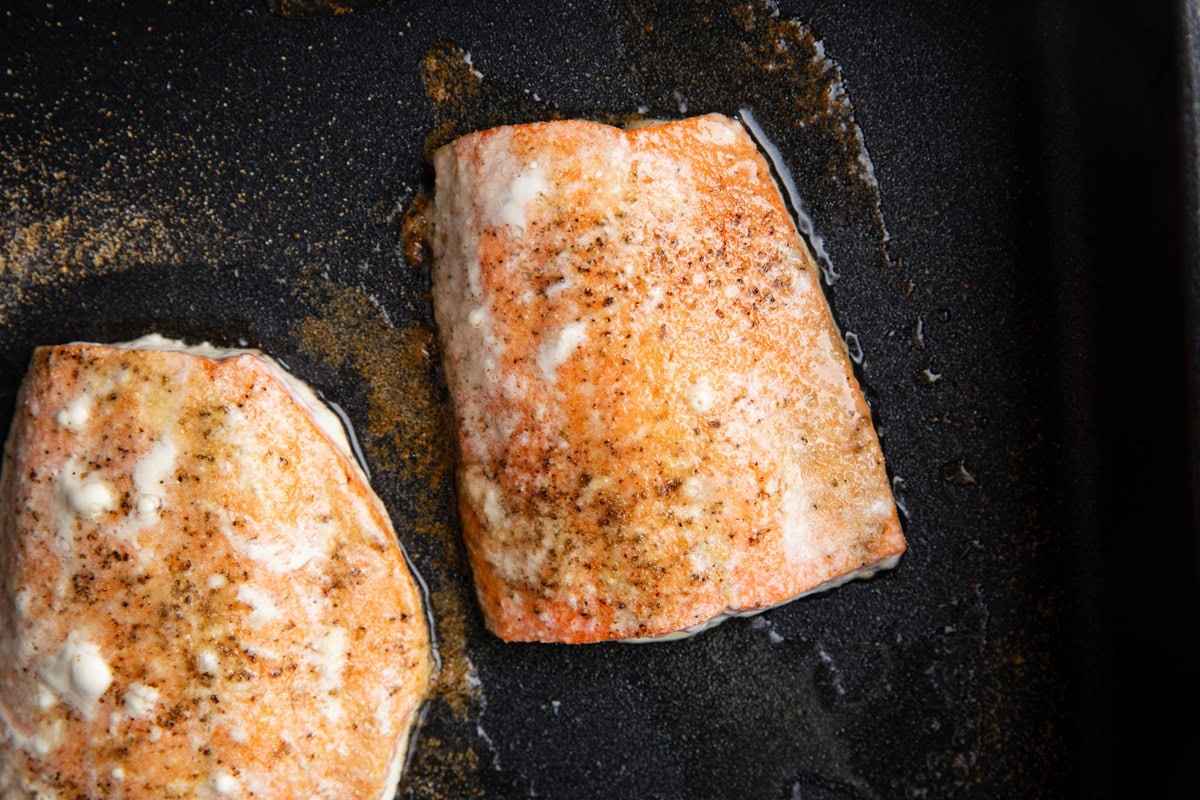
Bake on the center rack of the preheated oven for 10 to 15 minutes, or until the internal temperature of the salmon reaches 145 degrees F.
Insert a meat thermometer into the thickest part of the fish and wait until the numbers stop moving to get an accurate read.
Serve salmon with your choice of side dishes, and enjoy! If you’d like, garnish with fresh herbs and a drizzle of lemon juice.
Store leftover cooked salmon in an airtight container in the refrigerator for up to 3 days. I recommend enjoying leftover salmon the next day at the latest.
What to Serve with Sockeye Salmon:
Generally, roasted vegetables and salad are my favorite side dishes for serving with salmon. Here are some great options.
- Garlic Herb Roasted Vegetables
- Maple Roasted Carrots with Feta and Dried Cranberries
- Italian Pasta Salad
- Pear Apple Avocado Spinach Salad with Candied Walnuts, Feta, and Pumpkin Seeds
- Cucumber Tomato Salad
- Air Fryer Bacon Wrapped Asparagus
- Cheesy Smashed Potatoes
Final Cooking Temperature for Sockeye Salmon:
The FDA considers salmon to be fully cooked once it reaches an internal temperature of 145 degrees Fahrenheit. Many people find they prefer salmon cooked slightly under this, at around 125 to 135 degrees Fahrenheit.
Know that there is always a risk with consuming undercooked meat. When choosing to cook sockeye at a lower temperature than 145, be sure it is a quality piece of fish that has been previously frozen at a low temperature to kill any bacteria or parasites.
Different salmon varieties may require different cook times and temperatures, but no matter the type of salmon, 145 degrees is your target final temperature.
How Long To Bake Sockeye Salmon at 400 degrees F
Most small sockeye filets require 10 to 15 minutes at 400 degrees Fahrenheit in the oven.
The exact cooking time depends on the size and thickness of the filets as well as their temperature going into the oven. For instance, fish that is at room temperature requires less time to bake than fish that has been stored in the refrigerator.
For large sockeye salmon filets, I recommend curing a large filet into smaller filets prior to baking so that the fish bakes evenly and takes less time.
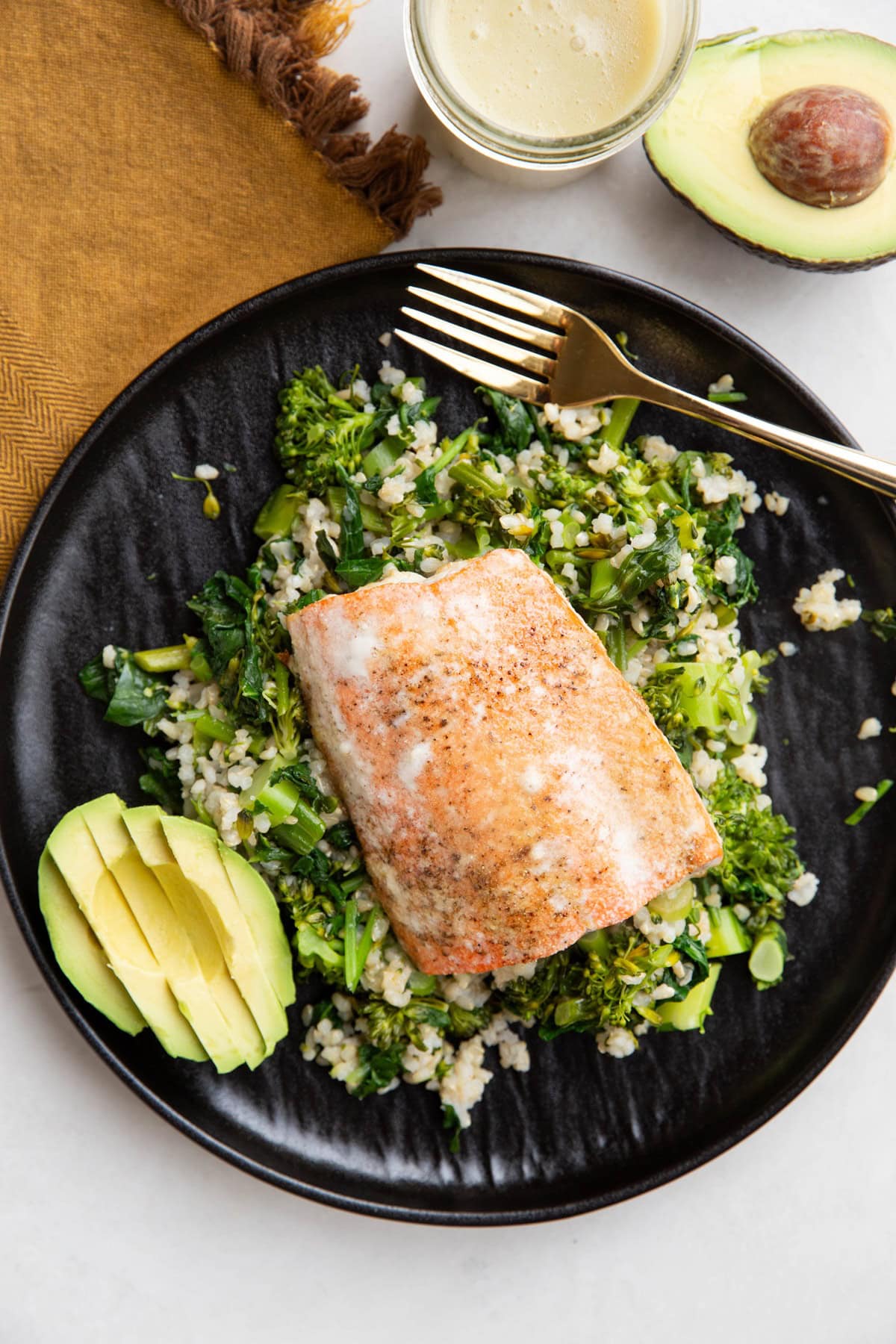
Looking for an alternate cooking method to prepare salmon? Here are some great methods for cooking salmon.
Salmon Cooking Methods:
Sockeye Salmon Nutrition Information:
One 6-ounce sockeye salmon filet contains 265 calories, 9 grams of fat (most of which is unsaturated), 45 grams of protein and 0 grams of carbs.
Pretty stellar macros! Get the full breakdown of the nutrition facts for this recipe in the recipe card below.
Wild salmon is loaded with health benefits as it is said to be phenomenal for heart health and brain health.
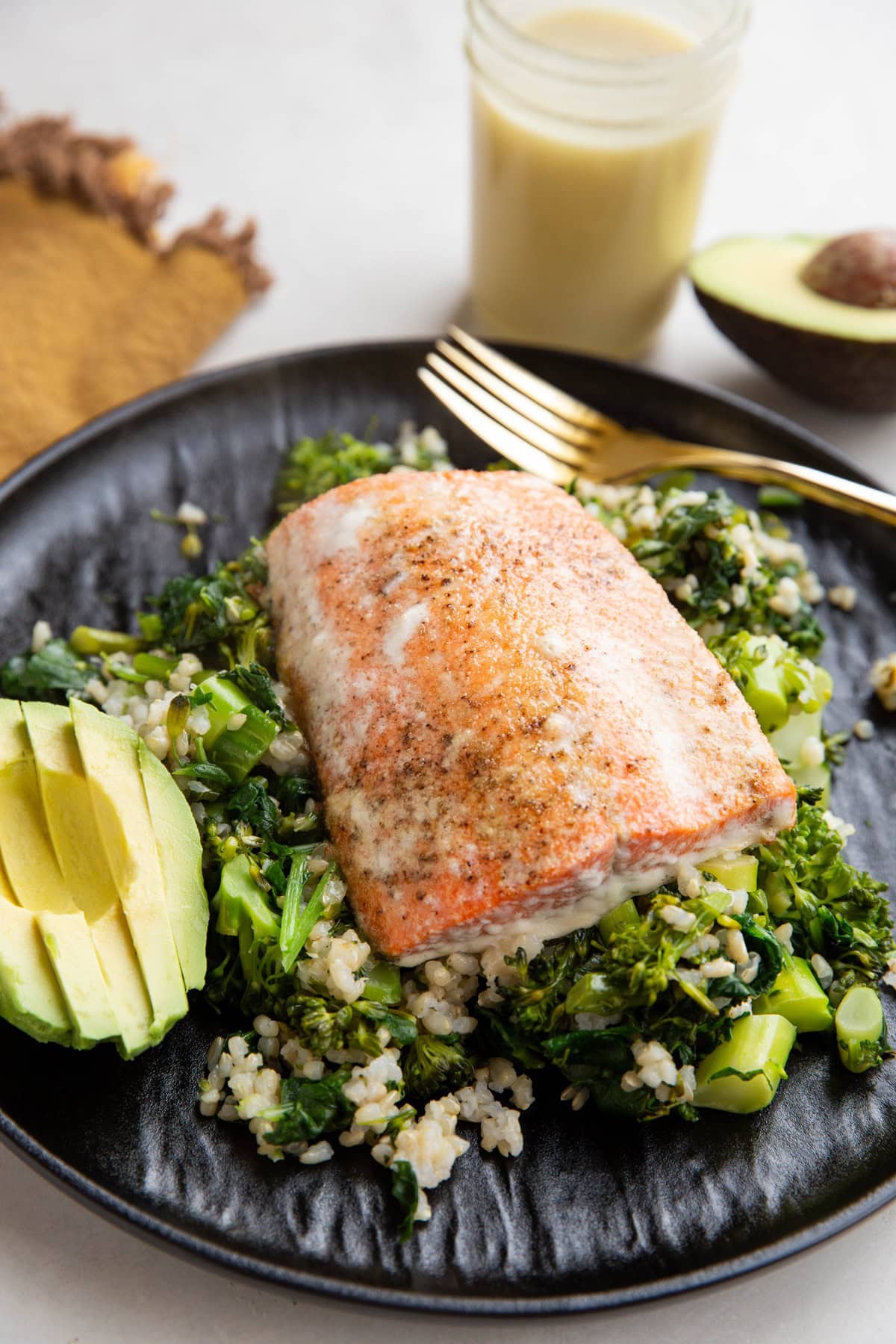
Looking for more easy salmon recipes? Here are some of my personal favorites.
More Healthy Salmon Recipes:
- Mediterranean Salmon in Parchment Paper
- Crispy Salmon with Roasted Red Pepper Sauce
- Salmon Stir Fry with Vegetables
- Crispy Sesame Salmon
- 4-Ingredient Mediterranean Stuffed Salmon
Whip up this wild sockeye salmon recipe for a quick dinner on any busy weeknight.
Enjoy sockeye salmon every night of the week!
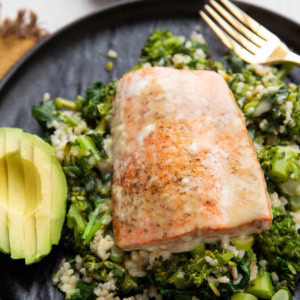
Baked Sockeye Salmon
Equipment
Ingredients
- 16 ounces sockeye salmon cut into filets
- 1 Tbsp avocado oil
- 1 tsp garlic powder to taste
- 1/2 tsp sea salt to taste
- 1/2 tsp black pepper to taste
Instructions
- Preheat the oven to 400 degrees Fahrenheit.
- Remove the sockeye filets from their packaging and place them in a large baking dish or on a large rimmed sheet pan. Use paper towels to dab off any excess moisture and keep salmon skin side down.
- Drizzle the salmon with avocado oil and use your hands or a silicone brush to coat the flesh with oil.
- Sprinkle the salmon with sea salt, garlic powder, and black pepper. You can add any spice blends you like here.
- Bake on the center rack of the preheated oven for 10 to 15 minutes, or until the internal temperature of the salmon reaches 145 degrees F.
- Insert a meat thermometer into the thickest part of the fish and wait until the numbers stop moving to get an accurate read.
- Serve salmon with your choice of side dishes, and enjoy! If you’d like, garnish with fresh herbs and a drizzle of lemon juice.
Nutrition
This post contains affiliate links, which means I make a small commission off items you purchase at no additional cost to you.
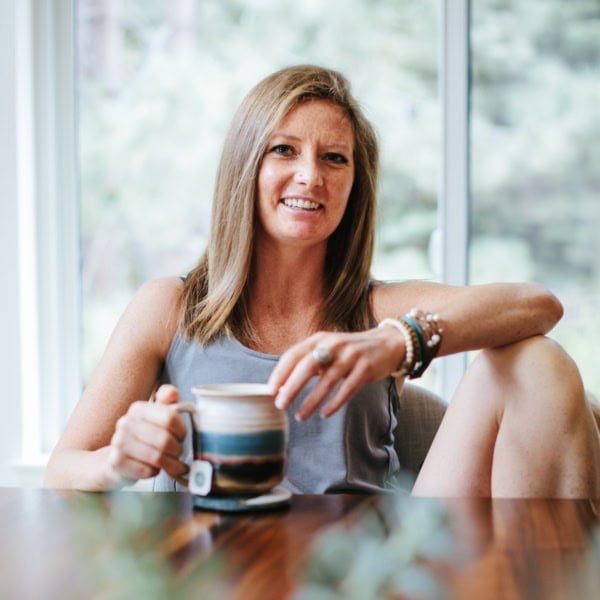
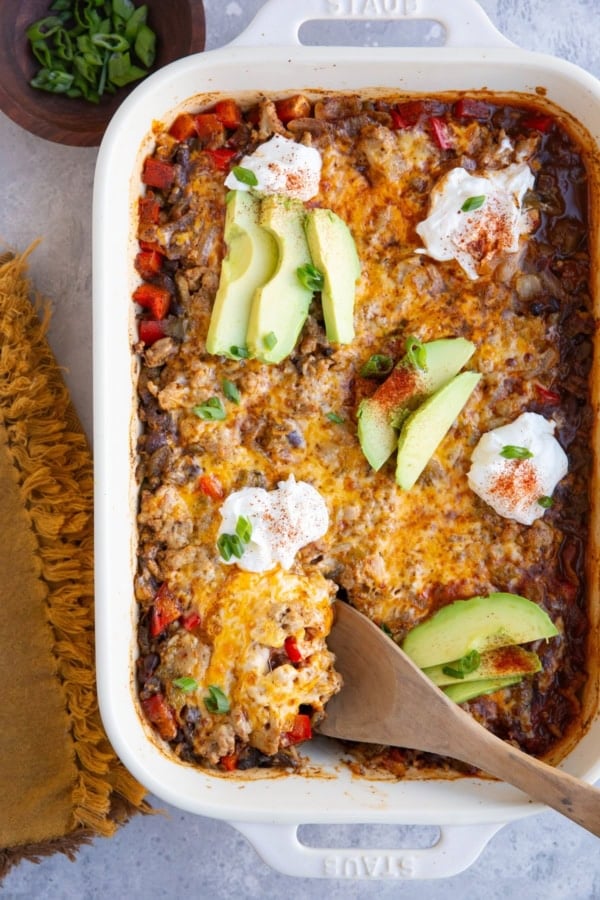
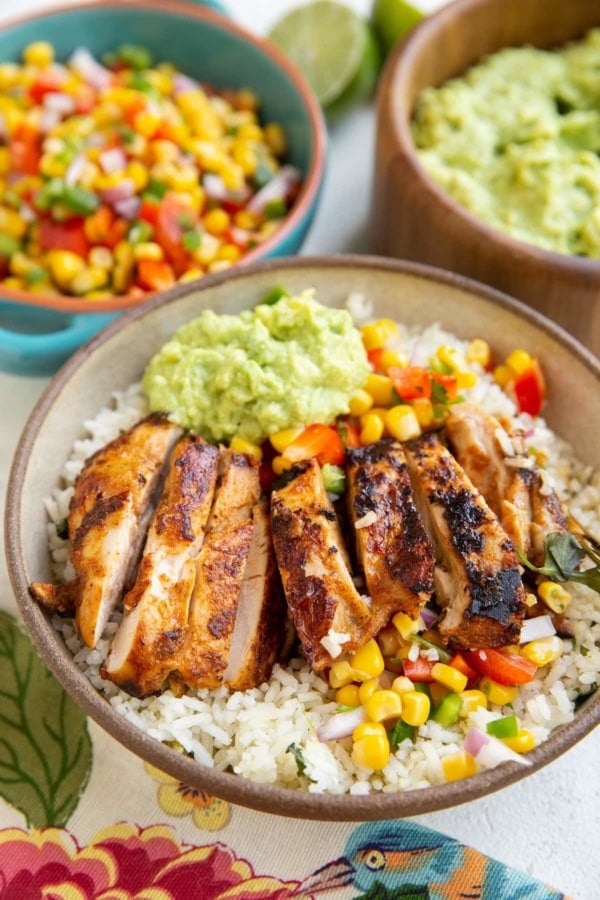
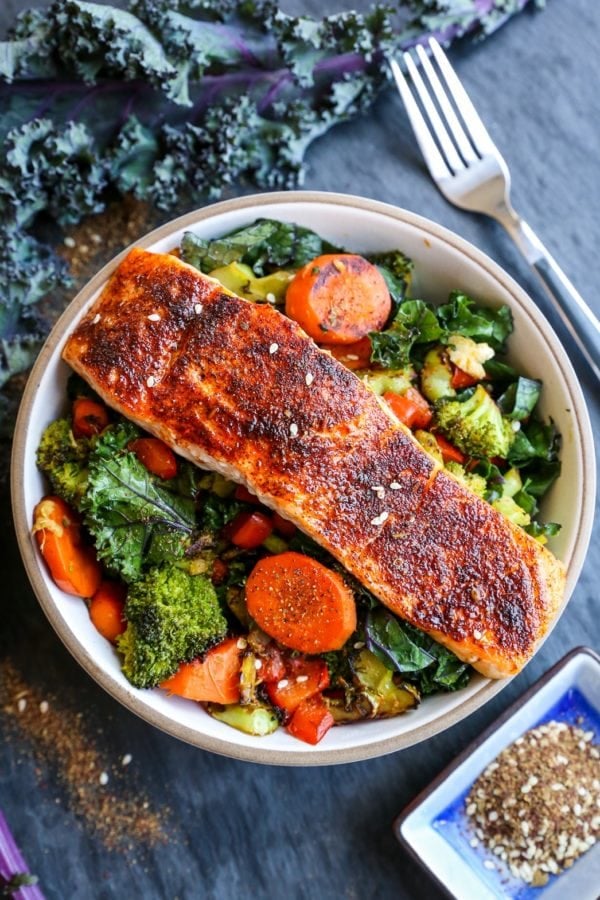
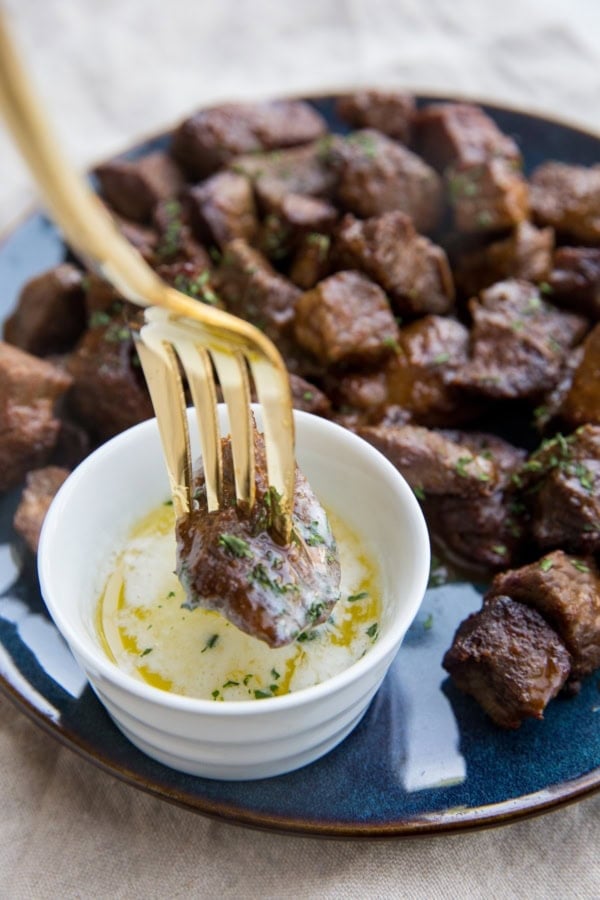









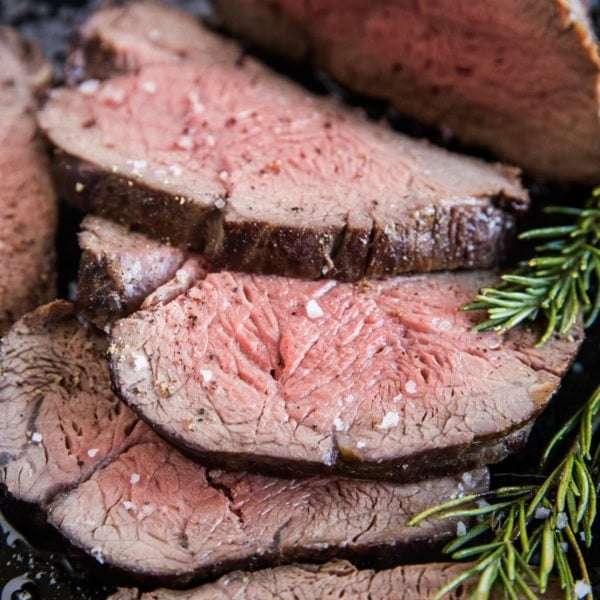
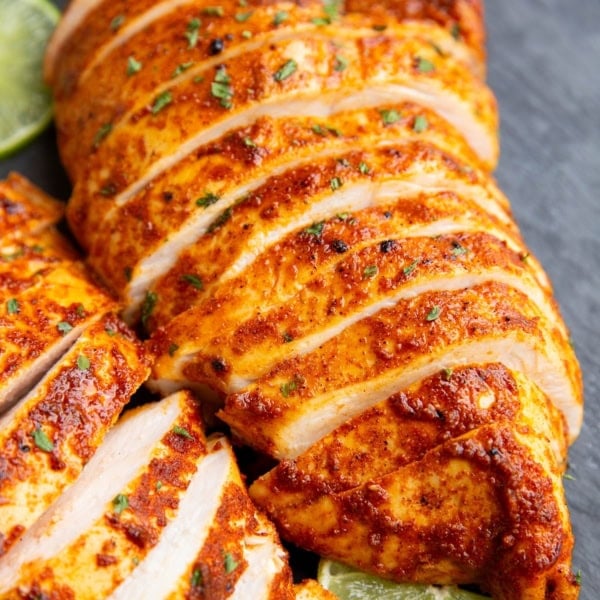
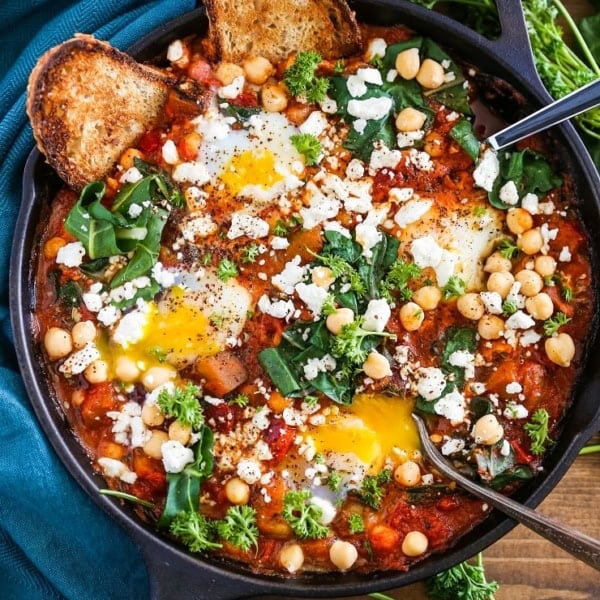
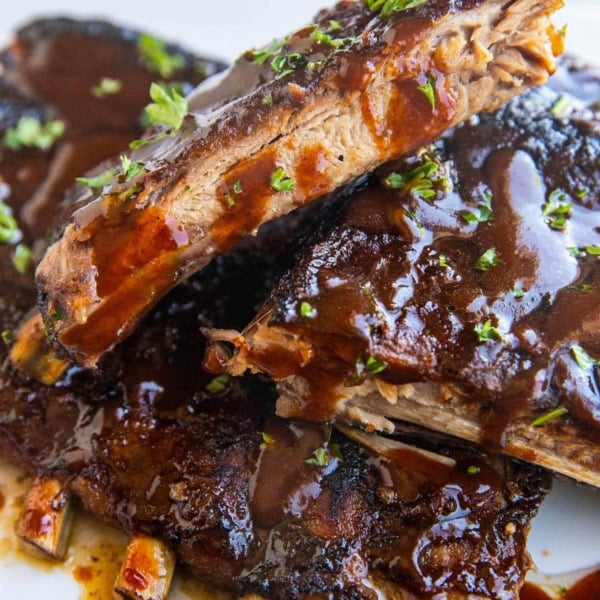
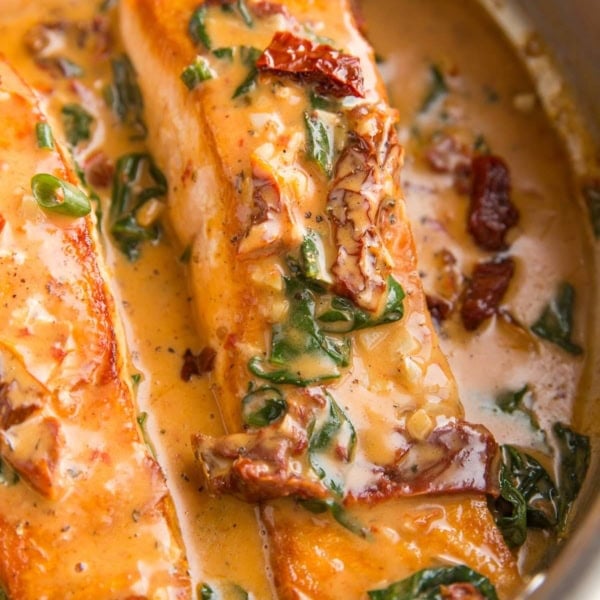
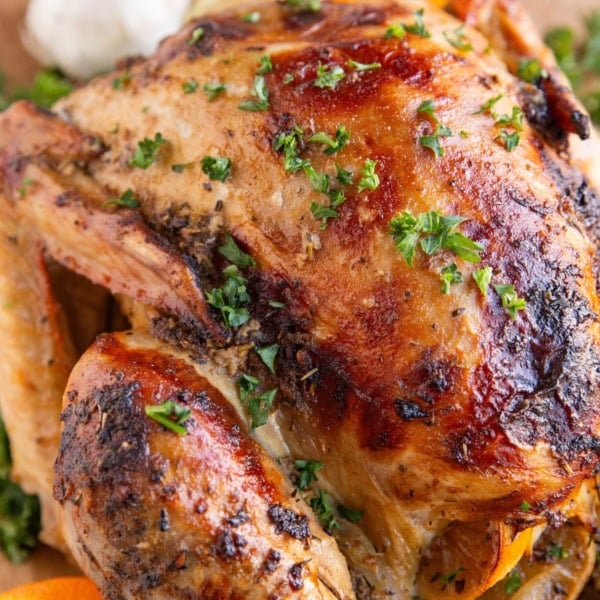
What temp do you set your oven at?
My apologies, Patricia! I had written the temperature within the post but neglected to add it to the recipe. It’s there now 🙂 400 degrees Fahrenheit. Hope you enjoy!! xo